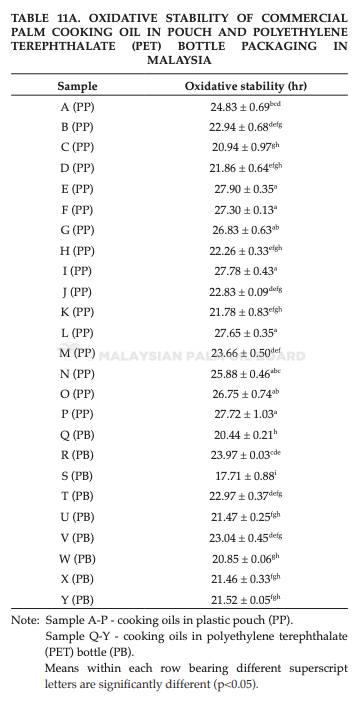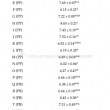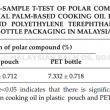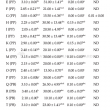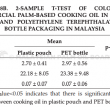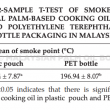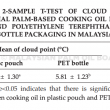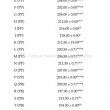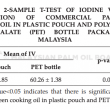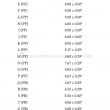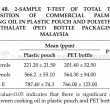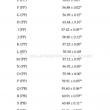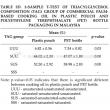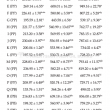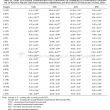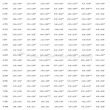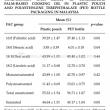Journal of Oil Palm Research Vol. 33 (3) September 2021, p. 493-513
QUALITY OF COMMERCIAL PALM-BASED COOKING OIL PACKED IN PLASTIC POUCH AND POLYETHYLENE TEREPHTHALATE (PET) BOTTLE
DOI: https://doi.org/10.21894/jopr.2020.0089
Received: 9 July 2020 Accepted: 20 August 2020 Published Online: 15 October 2020
The study compared the quality of palm cooking oil sold in two types of packaging in Malaysia; plastic pouch (16 samples) and polyethylene terephthalate (PET) bottle (9 samples). The study was conducted because consumer perceived that the quality of palm cooking oil in plastic pouch is lower than in the PET bottle due to its lower price. Cooking oil in plastic pouch is subsidised by the Government of Malaysia and as such, it is sold at a cheaper price compared to bottled cooking oil. Therefore, comparison of the initial quality in terms of free fatty acid (FFA), fatty acid composition (FAC), triacylglycerol composition (TAG), total vitamin E, iodine value (IV), cloud point, smoke point, colour, polar compound, polymer compound and oxidative stability index (OSI) of the commercial palm cooking oils were conducted between the cooking oil in plastic pouch and PET bottle. The quality parameters of average FFA, FAC (oleic, linoleic, palmitic and stearic acids), IV and colour (red and yellow) of cooking oil in both packagings met the specifications or guidelines by either Malaysian Standard (MS) 682:2004, MS 816:2007 or Palm Oil Refiners’ Association (PORAM) specifications/guidelines. However, quality parameters of TAG, total vitamin E, cloud point, smoke point, polar compound, polymer compound and OSI are not specified in any of the standards above. After conducting a 2-sample t-test to detect differences of cooking oil in both packagings, quality parameters of average FFA, FAC (oleic acid), total vitamin E, colour (red, yellow, neutral and blue), polar compound and polymer compound were comparable between cooking oil in plastic pouch and PET bottle. However, the FAC (palmitic acid, stearic acid and linoleic acid), TAG [UUU (unsaturated-unsaturated-unsaturated) and SUU (saturated-unsaturated-unsaturated)], IV and cloud point quality of cooking oil in PET bottle were better than in plastic pouch in which FAC (stearic acid and linoleic acid), TAG [UUU (unsaturated-unsaturated-unsaturated) and SUU (saturated-unsaturated-unsaturated)] and IV in PET bottle showed higher value while and FAC (palmitic acid) and cloud point showed lower value than plastic pouch in this study. Notwithstanding this, the smoke point and OSI quality of commercial palm cooking oil in plastic pouch was better than in PET bottle, having higher values than plastic pouch. TAG [SUS (saturated-unsaturated-saturated)] of commercial cooking oil in plastic pouch was also higher than in PET bottle but did not necessarily provide indication of good quality cooking oil.
KEYWORDS:FIGURES & TABLES:
1Malaysian Palm Oil Board,
6 Persiaran Institusi, Bandar Baru Bangi,
43000 Kajang, Selangor, Malaysia.
* Corresponding author e-mail: azuraaila@mpob.gov.my
